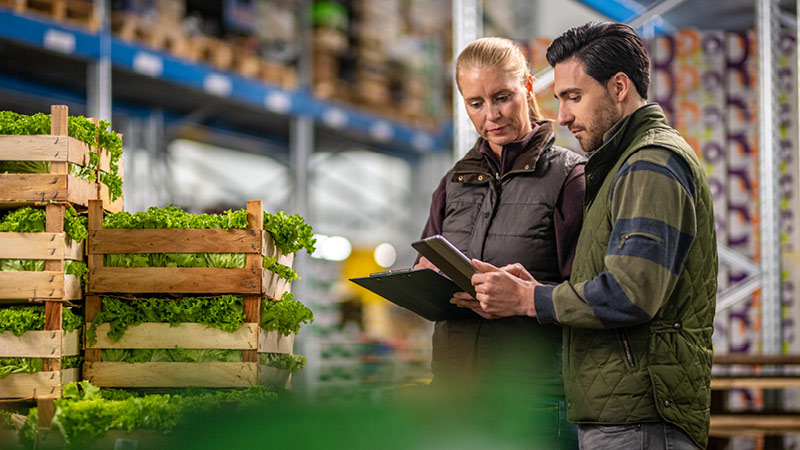Recent Trade & Tariff Perspectives
September 8, 2021 | Kevin Koch Senior Manager, Product Development

Mitigating Risks and Controlling Landed Costs with Customs Solutions
In today’s complex and volatile supply chain, it’s imperative shippers are as accurate as possible when determining their landed costs, since this may make or break their profitability. Factoring in the fees associated with moving cargo from shipper to the ultimate consignee, we know that landed cost calculations can become a difficult exercise. Depending on a product’s classification and its country of origin, its customs’ duties and fees can become a significant cost driver towards total landed costs.
Strong trade compliance programs mitigate risk and help clarify landed costs
One way of gaining clarity for your products’ customs landed costs is by obtaining a binding ruling. U.S. Customs & Border Protection (CBP) lists binding rulings as one way of demonstrating “reasonable care.”
Remember that, under Section 484 of the Tariff Act, the importer of record is responsible for using “reasonable care” to enter, classify, and determine the value of imported merchandise. In addition, the importer must provide any other information necessary to enable CBP to properly assess duties, collect accurate statistics, and determine whether other applicable legal requirements have been met. An importer’s failure to exercise reasonable care could delay release of the merchandise. In some cases, this could result in the imposition of penalties or the referral for criminal enforcement.
CBP expects you to know the rules of the road to trade compliance
Here’s a sampling of questions that CBP expects you to be able to answer regarding your trade compliance program:
- Origin/Marking/Classification/Forced Labor/Section 301: Do you know how your goods are made—from raw materials to finished goods—by whom and where? Do you know whether your goods will be subject to the Section 301 trade remedies currently in effect?
- Valuation: Have you consulted the CBP valuation laws and regulations, Customs Valuation Encyclopedia, CBP's informed compliance publications, court cases, and CBP’s rulings on the Customs Rulings Online Search System (CROSS) to assist you in valuing merchandise? Have you obtained a ruling from CBP regarding the valuation of the merchandise? If so, have you established reliable procedures to ensure you have followed the ruling?Country of Origin and Marking: Have you established reliable procedures to ensure that you report the correct country of origin on customs entry documents? Have you obtained a ruling from CBP regarding the proper marking and country of origin of the merchandise? If so, have you established reliable procedures to ensure that you followed the ruling?
- Origin Determination/Trade Preference Program Eligibility: If you are claiming a change in the origin of the merchandise, or claiming that the goods are of U.S. origin, have you taken required measures to substantiate your claim?
How can a binding ruling help shippers make critical business decisions?
An importer may wish to obtain a ruling under CBP Regulations (19 C.F.R. Part 177) or obtain advice from an expert who specializes in customs matters since there are many complicated factors that can affect customs issues. The binding ruling program enables importers and other interested parties to get binding, pre-entry classification decisions prior to importing a product and filing their entries with CBP. The decision can also be used to get binding guidance about other CBP regulations, such as marking and country of origin requirements.
Advance rulings provide the international trade community a transparent means of understanding how CBP will treat a prospective import transaction. A ruling letter may address the tariff classification or appraised value of merchandise, the liquidation of an entry, or the merchandise’s exclusion from entry. Ruling letters facilitate trade and enable companies to make business decisions based on how their goods will be treated upon import.
How can C.H. Robinson’s trade policy team help?
Companies are still adapting their supply chains and manufacturing processes when it comes to Section 301 tariffs. When a company looks to move its manufacturing and/or assembly processes in hopes of averting Section 301 tariffs, C.H. Robinson’s trade policy team recommends the submission of a binding ruling to definitively confirm the last country where the substantial transformation of goods occurs.
Our team continues to stay very busy with these ruling services as it pertains to the changes under the rules of origin and related Section 301 tariff applicability. If you’re interested in learning more about binding rulings and how they can support your trade compliance program, connect with one of our trade policy experts to learn more.
Review recent perspectives
- March 2 | Customs and Trade Policy Developments We’re Following This Month
- February 16 | Transporting goods inside Mexico. Are you complying with Complemento Carta Porte?
- February 2 | Canada to U.S. Shipments: Your Guide to Reducing Import Costs
- January 19 | Importing into the United States from Canada? Here’s What You Need to Know
